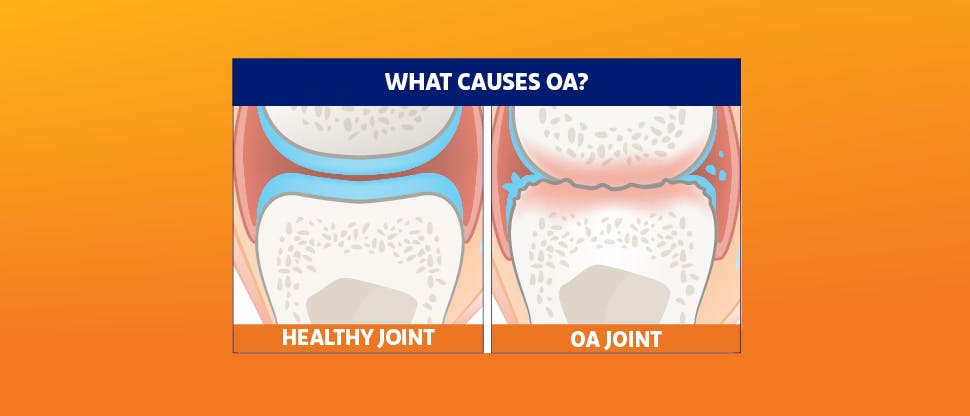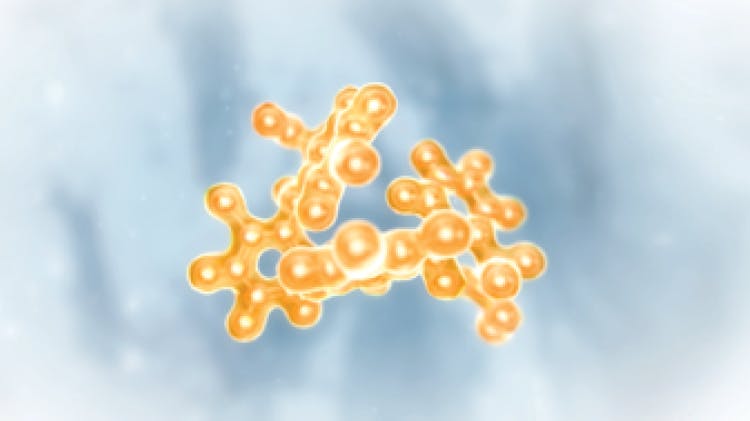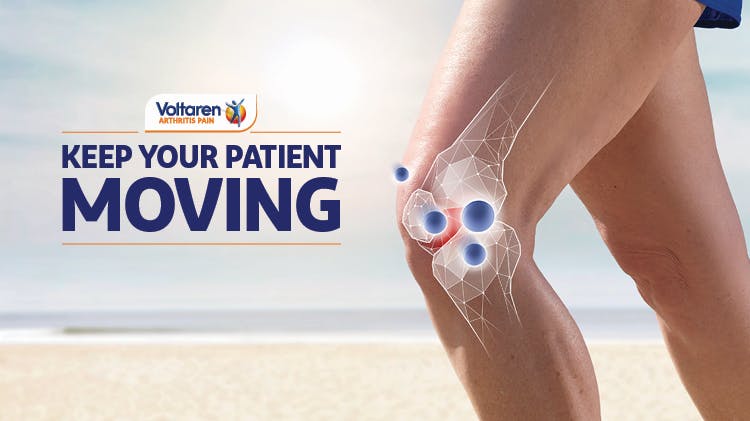Causes of Osteoarthritis (OA) Pain

What causes joint and OA pain?
OA is caused by a localized loss of cartilage, bone shape changes due to joint function, and associated inflammation.1 Many risk factors play into developing and being susceptible to OA, but the chances of diagnosis increase with age.2Manifestation of the disease is highly variable, but is most often associated with significant symptoms.3

How does OA develop?
- OA is a multistep process that starts with gradually losing or damaging cartilage4
- Once the cartilage is damaged, changes occur in the underlying bone, which can cause the bone to thicken or grow spurs1,5
- The joint components become so damaged that the joint doesn’t function properly6
- Bone and cartilage fragments float in the synovial fluid, causing irritation and pain7
- The synovial fluid no longer lubricates the joint correctly and loses its ability to absorb shock8
- The synovial fluid releases inflammatory cytokines, which damage the cartilage further. The joint cavity fills with further synovial fluid, causing distension and pain9
OA causes joint damage over time, affecting body parts like the hands, spine, knees, and hips.10 OA can lead to deformed or enlarged joints, but pain is often cited as the limiting symptom.2,3Aside from pain, bony growths, known as spurs, limited range of motion, swelling, and malalignment are other symptoms associated with OA.5,6,11



